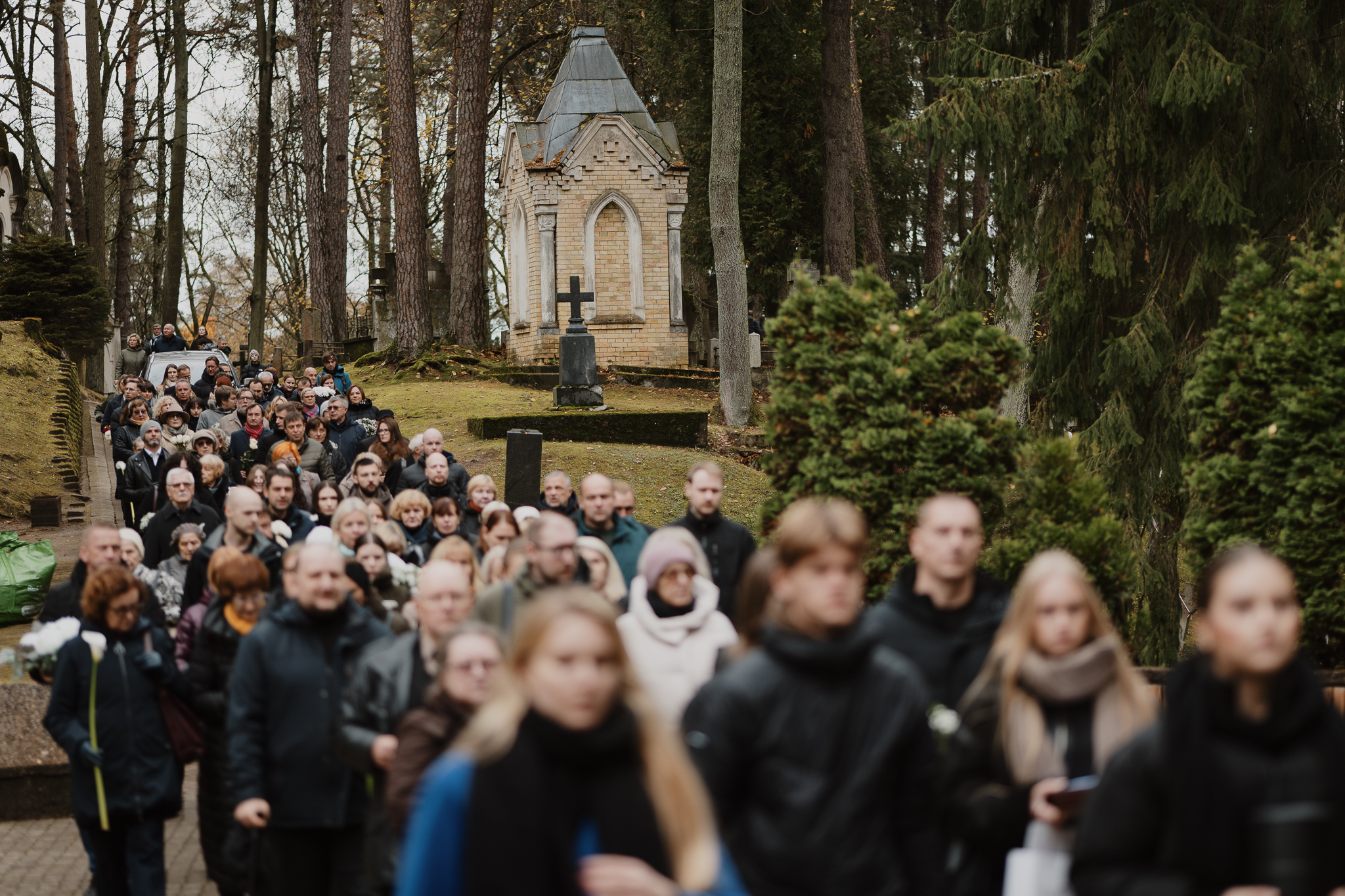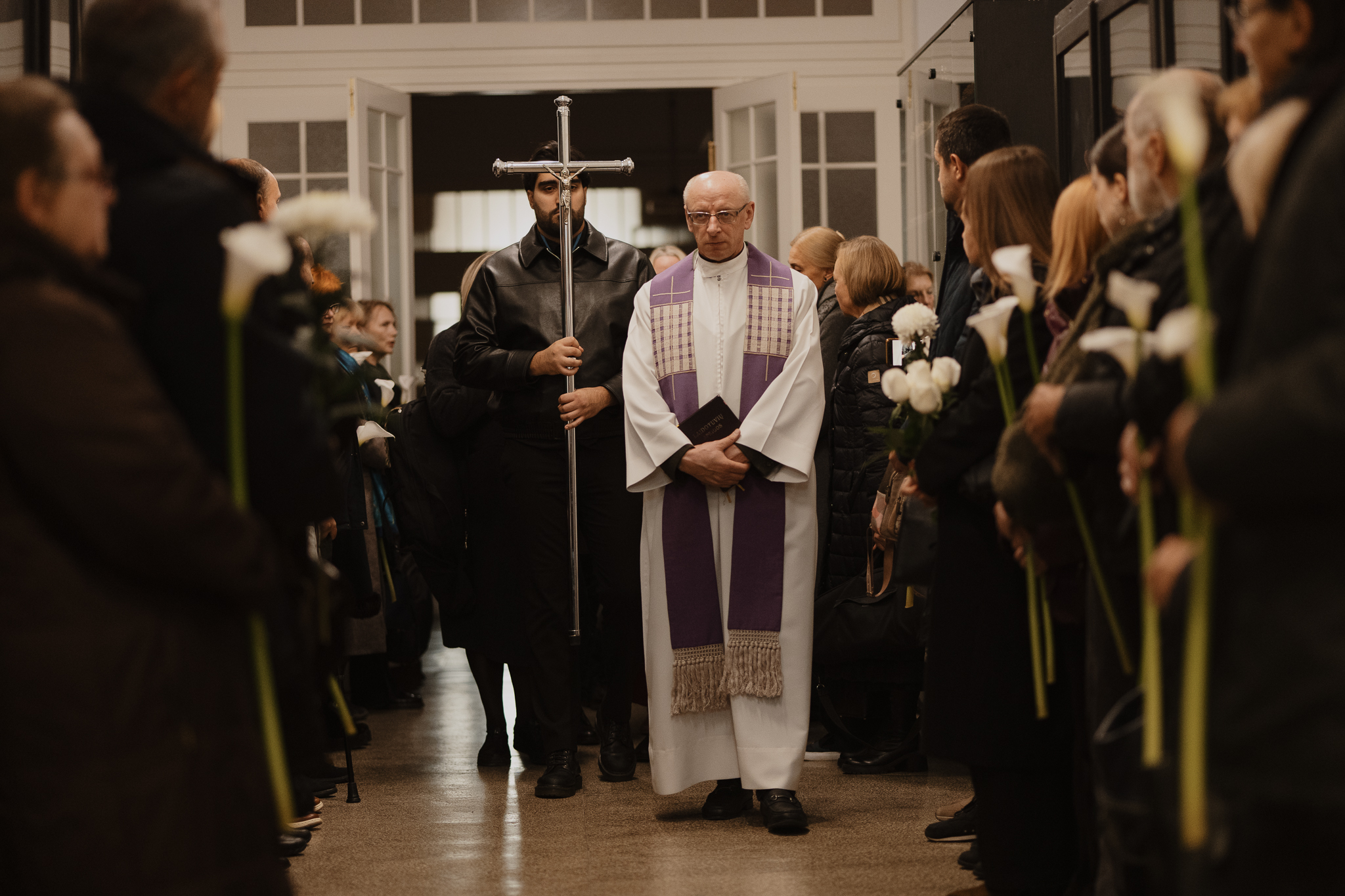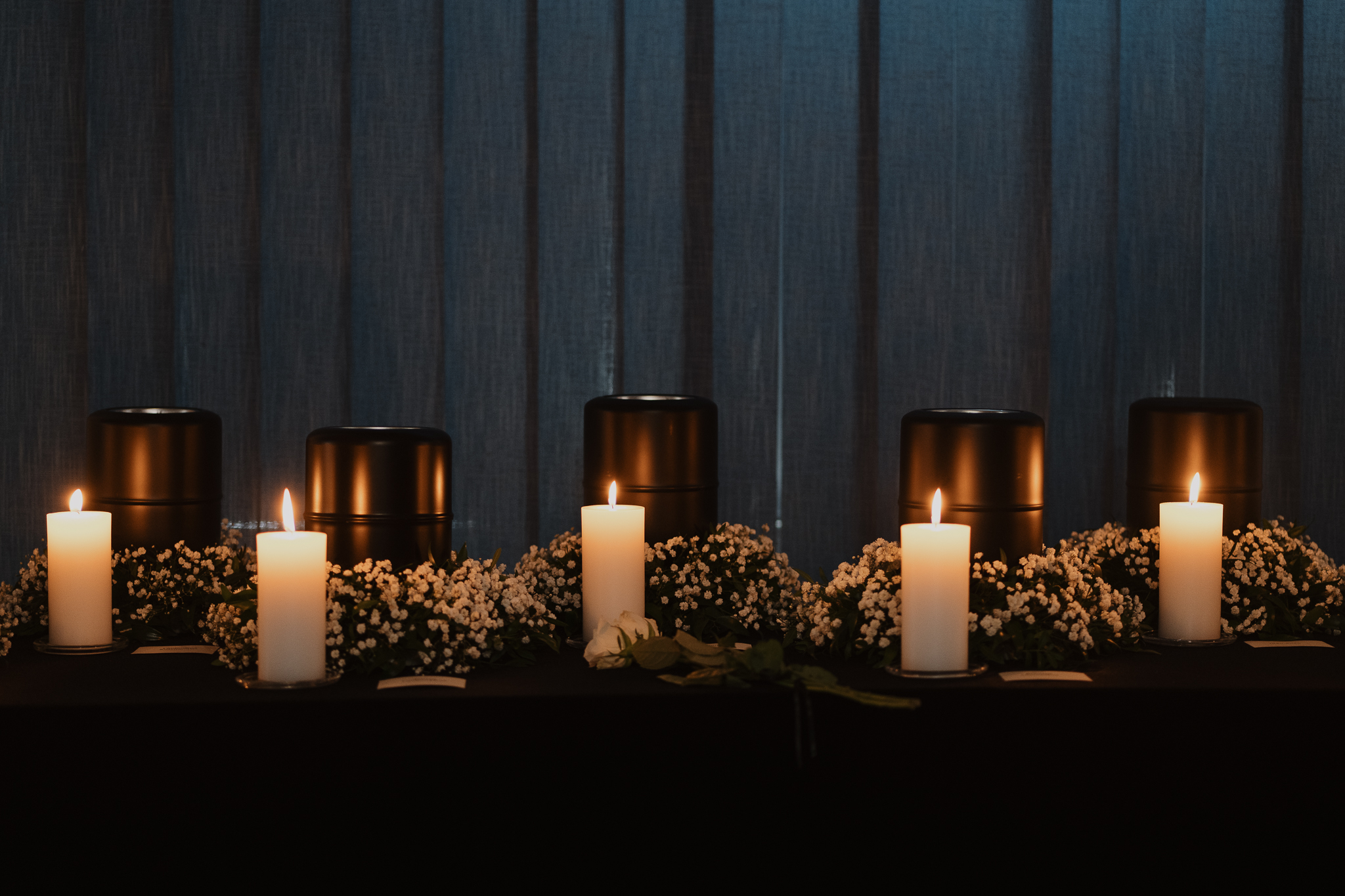27 Persons Who Donated Their Bodies to Medical Science Honoured at a Solemn VU Ceremony

On 29 October, the remains of 27 persons who donated their bodies to medical science were buried in a solemn ceremony held by the Faculty of Medicine of Vilnius University (VU) in a specially designated resting place at Antakalnis Cemetery. For the first time, such a significant ceremony honoured the memory of donors and their important contribution to medical science and research. As the number of donated bodies grows in Lithuania every year, in the future, the specially designated resting place will have the capacity for more than 1,000 urns.
Valerijus Sosnovskis, whose mother, Olga Sosnovskaja, donated her body to science, was also in attendance and said that he feels grateful to the University and claims that donation is beneficial to people. Like his mother, Sosnovskis has signed a statement of intention; therefore, he will also donate his body to science after his death.
‘My mom and I used to joke that we might donate our bodies and educate some good surgeon,’ he said.
Benefits of Learning from Donor Bodies
‘This is the resting place of the first donors who donated their bodies to anatomy studies and science. These are some of the bravest people, some of the first who were determined, did not back down, expressed their will, and gifted our students the best opportunity to learn anatomy, because no other means currently exist that could replace it,’ said Elvinas Francišekas Bogdzevičius, coordinator of VU’s body donation programme.
On average, the Department of Anatomy, Histology and Anthropology of the VU Faculty of Medicine receives 35 body donation statements and six to ten donor bodies annually. Donated bodies play a vital role in anatomy studies for medical students, for professional development programmes for doctors, and in research that expands knowledge of the human body and refines existing treatment methods.
‘Students are given the opportunity to learn real anatomy, to understand the human body, how anatomical structures are arranged within it, and to see certain anatomical variations. Although anatomy is a very old science, it is also ever-changing,’ Bogdzevičius said.

According to Juozapas Ryliškis, a fourth-year student of Medicine at the VU Faculty of Medicine, learning from donor bodies allows us to understand the real complexity and elaborateness of human anatomy.
‘Learning from a real body brings benefits that you will never see in a textbook or even a most perfect lifelike model. Ultimately, we will treat real people, not training models, so we want to gain experience beyond textbooks,’ he said.
Increasing Number of Donors and Donation Statements
The number of persons who wish to donate their bodies to science is increasing, with a record 70 body donation statements received last year. The number of donated bodies is also growing: this year there were ten, last year – eleven, and in 2023 – eight.
‘The most important factor why people are more and more willing to donate their bodies for studies is changing mindsets, liberation, wider media coverage of this phenomenon, a favourable attitude of the church and increasing altruism of people, as well as the desire to serve even after death,’ said Prof. Janina Tutkuvienė, Head of the Department of Anatomy, Histology and Anthropology of the VU Faculty of Medicine.
According to Bogdzevičius, a person who agrees to donate their body to science also decides on the period for which their body will be used.
‘We ask for at least a year, because the embalming process itself takes about six months. Another option is an unlimited period of use of the body. Most often, people choose this option, but there are cases when they want the body to be returned to the grave of their relatives later, so a shorter period of two to three years is chosen,’ he said.

Currently, the Register of Living Donors of the Faculty of Medicine of Vilnius University contains almost 500 completed statements of intention. At the time of the statement of intention, the average age of donors is 70, and the average age of bodies that arrive at the Faculty of Medicine after death is 78. The youngest person who expressed their intent to donate their body to science was 19 years old, and the oldest was 98 years old. Meanwhile, the age of the donors who arrived at the Faculty after death ranges from 37 to 99 years.
The possibility of donating the body to science after death in Lithuania emerged in 2007, when the Law on the Burial of Human Remains came into force. The first donated body was received by the Department of Anatomy, Histology and Anthropology of the VU Faculty of Medicine one year after the adoption of this Law. However, as Professor Tutkuvienė recalled, the first statement of intention came to the Department as early as 1999, ‘It was a handwritten statement by a distinguished Professor Emeritus of Biomedicine at Vilnius University.’